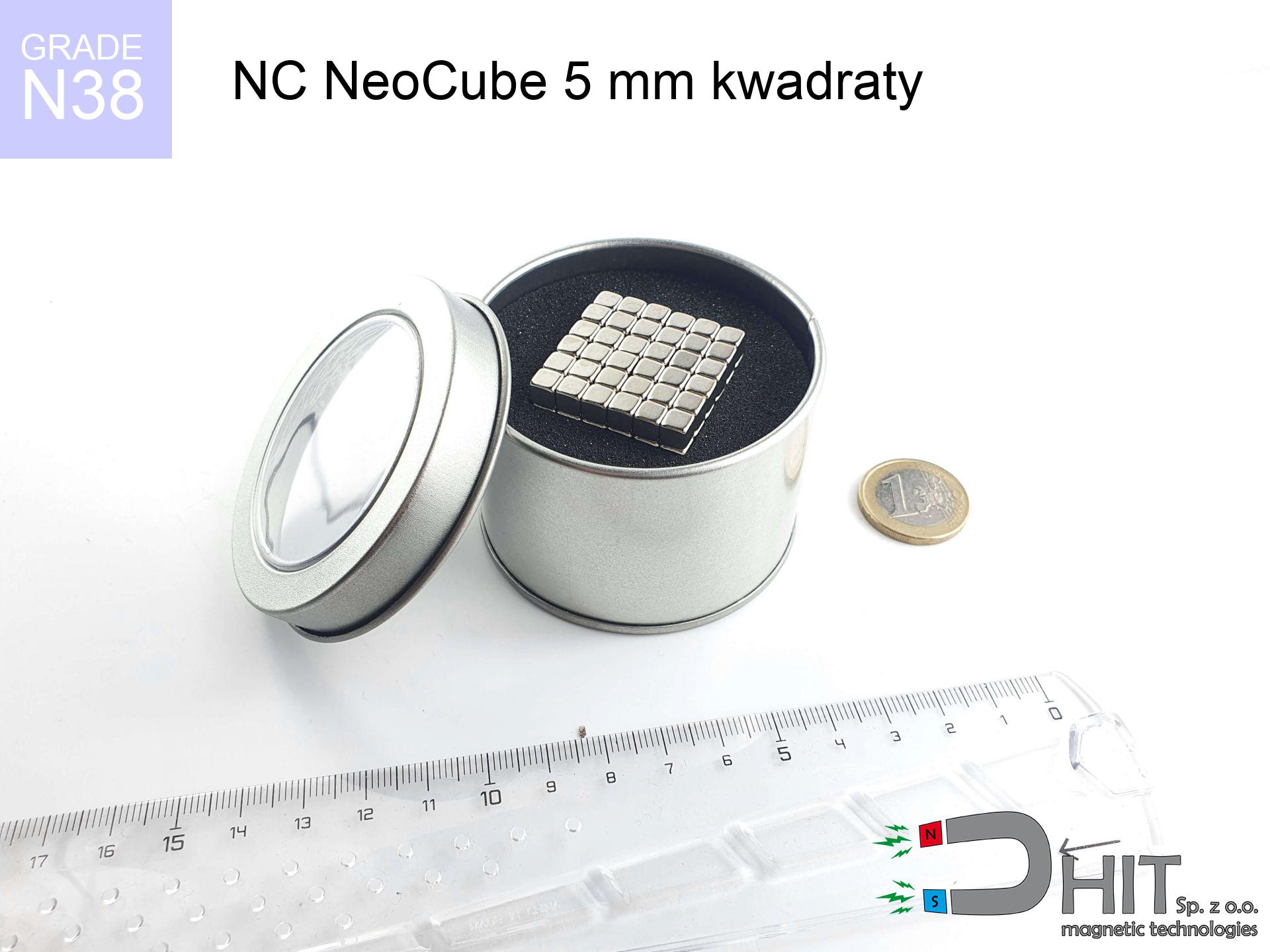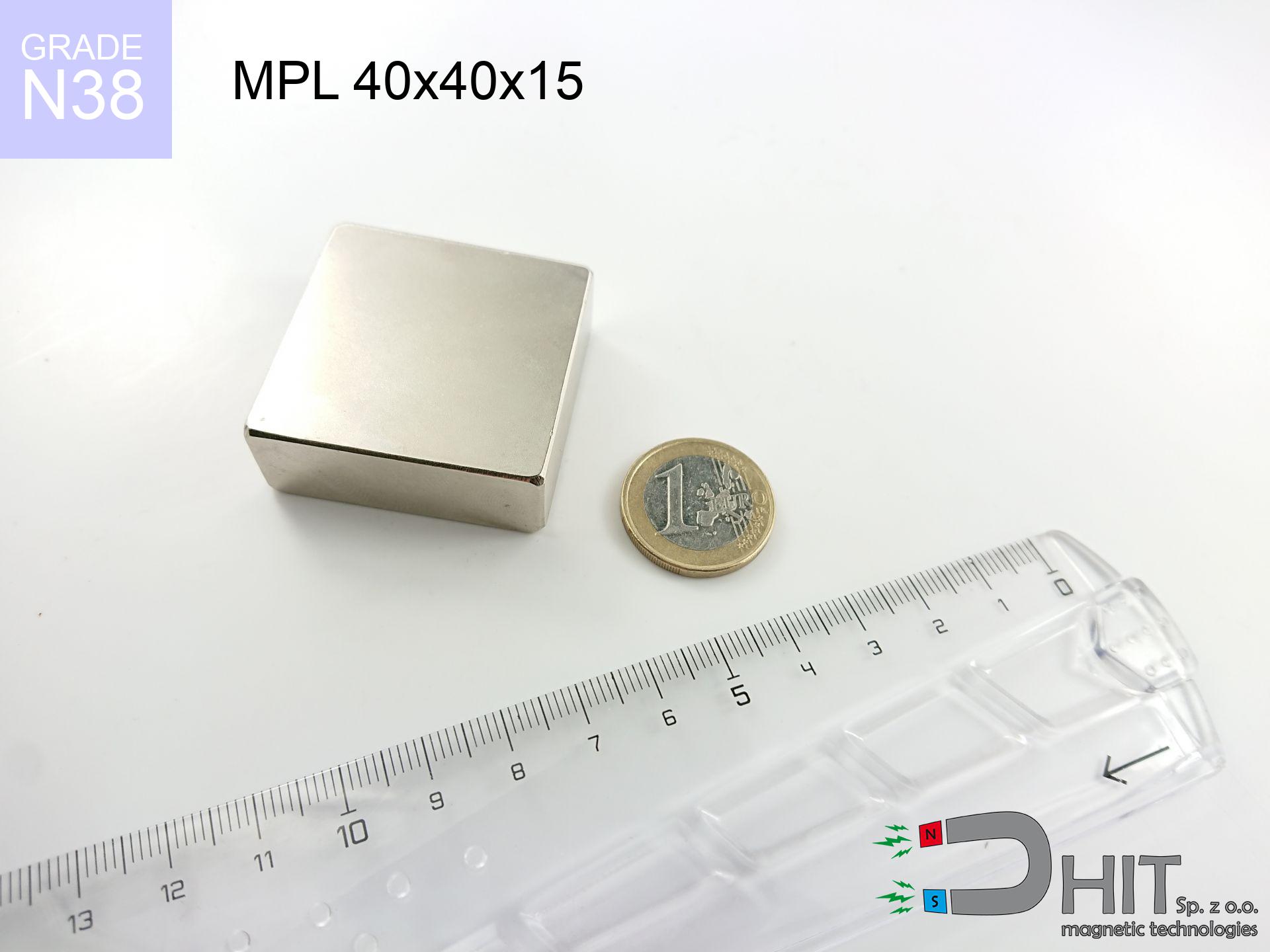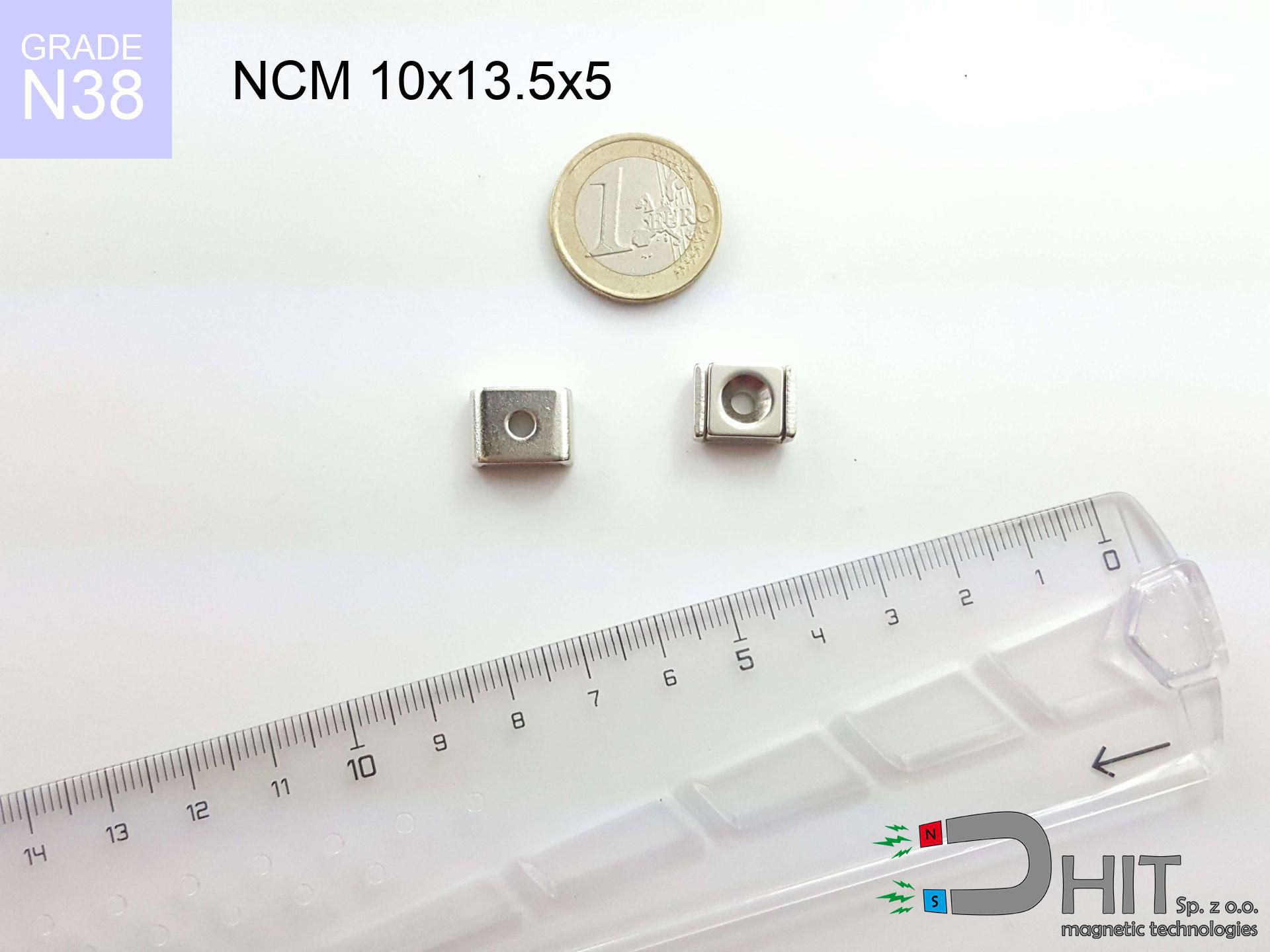NC NeoCube 5 mm kwadraty / N38 - neocube
neocube
Catalog no 120227
GTIN/EAN: 5906301812661
Weight
216.5 g
Magnetization Direction
↑ axial
Coating
[NiCuNi] Nickel
49.99 ZŁ with VAT / pcs + price for transport
40.64 ZŁ net + 23% VAT / pcs
bulk discounts:
Need more?
Contact us by phone
+48 22 499 98 98
otherwise let us know using
inquiry form
the contact form page.
Lifting power along with appearance of a neodymium magnet can be calculated with our
modular calculator.
Order by 14:00 and we’ll ship today!
Technical - NC NeoCube 5 mm kwadraty / N38 - neocube
Specification / characteristics - NC NeoCube 5 mm kwadraty / N38 - neocube
| properties | values |
|---|---|
| Cat. no. | 120227 |
| GTIN/EAN | 5906301812661 |
| Production/Distribution | Dhit sp. z o.o. |
| Country of origin | Poland / China / Germany |
| Customs code | 85059029 |
| Weight | 216.5 g |
| Magnetization Direction | ↑ axial |
| Coating | [NiCuNi] Nickel |
| Manufacturing Tolerance | ±1 mm |
Magnetic properties of material N38
| properties | values | units |
|---|---|---|
| remenance Br [min. - max.] ? | 12.2-12.6 | kGs |
| remenance Br [min. - max.] ? | 1220-1260 | mT |
| coercivity bHc ? | 10.8-11.5 | kOe |
| coercivity bHc ? | 860-915 | kA/m |
| actual internal force iHc | ≥ 12 | kOe |
| actual internal force iHc | ≥ 955 | kA/m |
| energy density [min. - max.] ? | 36-38 | BH max MGOe |
| energy density [min. - max.] ? | 287-303 | BH max KJ/m |
| max. temperature ? | ≤ 80 | °C |
Physical properties of sintered neodymium magnets Nd2Fe14B at 20°C
| properties | values | units |
|---|---|---|
| Vickers hardness | ≥550 | Hv |
| Density | ≥7.4 | g/cm3 |
| Curie Temperature TC | 312 - 380 | °C |
| Curie Temperature TF | 593 - 716 | °F |
| Specific resistance | 150 | μΩ⋅cm |
| Bending strength | 250 | MPa |
| Compressive strength | 1000~1100 | MPa |
| Thermal expansion parallel (∥) to orientation (M) | (3-4) x 10-6 | °C-1 |
| Thermal expansion perpendicular (⊥) to orientation (M) | -(1-3) x 10-6 | °C-1 |
| Young's modulus | 1.7 x 104 | kg/mm² |
Elemental analysis
| iron (Fe) | 64% – 68% |
| neodymium (Nd) | 29% – 32% |
| boron (B) | 1.1% – 1.2% |
| dysprosium (Dy) | 0.5% – 2.0% |
| coating (Ni-Cu-Ni) | < 0.05% |
Sustainability
| recyclability (EoL) | 100% |
| recycled raw materials | ~10% (pre-cons) |
| carbon footprint | low / zredukowany |
| waste code (EWC) | 16 02 16 |
Other products
Strengths as well as weaknesses of Nd2Fe14B magnets.
Strengths
- They retain full power for almost 10 years – the loss is just ~1% (based on simulations),
- Neodymium magnets remain extremely resistant to magnetic field loss caused by external interference,
- In other words, due to the shiny layer of nickel, the element gains visual value,
- Magnets are characterized by impressive magnetic induction on the working surface,
- Neodymium magnets are characterized by extremely high magnetic induction on the magnet surface and can work (depending on the form) even at a temperature of 230°C or more...
- Thanks to flexibility in shaping and the ability to customize to specific needs,
- Fundamental importance in modern industrial fields – they are used in hard drives, drive modules, medical equipment, as well as complex engineering applications.
- Compactness – despite small sizes they offer powerful magnetic field, making them ideal for precision applications
Limitations
- Susceptibility to cracking is one of their disadvantages. Upon strong impact they can break. We recommend keeping them in a steel housing, which not only protects them against impacts but also raises their durability
- When exposed to high temperature, neodymium magnets experience a drop in force. Often, when the temperature exceeds 80°C, their strength decreases (depending on the size and shape of the magnet). For those who need magnets for extreme conditions, we offer [AH] versions withstanding up to 230°C
- When exposed to humidity, magnets start to rust. For applications outside, it is recommended to use protective magnets, such as magnets in rubber or plastics, which secure oxidation and corrosion.
- Limited possibility of producing threads in the magnet and complex shapes - recommended is cover - mounting mechanism.
- Potential hazard to health – tiny shards of magnets pose a threat, if swallowed, which is particularly important in the context of child safety. Furthermore, small elements of these magnets can be problematic in diagnostics medical after entering the body.
- With budget limitations the cost of neodymium magnets is economically unviable,
Lifting parameters
Best holding force of the magnet in ideal parameters – what contributes to it?
- using a base made of mild steel, acting as a ideal flux conductor
- whose thickness equals approx. 10 mm
- with a plane cleaned and smooth
- without the slightest clearance between the magnet and steel
- under vertical application of breakaway force (90-degree angle)
- at ambient temperature approx. 20 degrees Celsius
What influences lifting capacity in practice
- Gap between surfaces – even a fraction of a millimeter of distance (caused e.g. by varnish or dirt) diminishes the magnet efficiency, often by half at just 0.5 mm.
- Load vector – highest force is reached only during pulling at a 90° angle. The resistance to sliding of the magnet along the plate is usually many times smaller (approx. 1/5 of the lifting capacity).
- Steel thickness – too thin steel causes magnetic saturation, causing part of the flux to be lost to the other side.
- Material type – ideal substrate is pure iron steel. Hardened steels may generate lower lifting capacity.
- Plate texture – ground elements ensure maximum contact, which improves field saturation. Uneven metal weaken the grip.
- Temperature – heating the magnet causes a temporary drop of induction. It is worth remembering the thermal limit for a given model.
Holding force was measured on the plate surface of 20 mm thickness, when a perpendicular force was applied, however under attempts to slide the magnet the load capacity is reduced by as much as 5 times. In addition, even a slight gap between the magnet and the plate decreases the lifting capacity.
H&S for magnets
Shattering risk
Protect your eyes. Magnets can fracture upon violent connection, ejecting shards into the air. We recommend safety glasses.
Respect the power
Before starting, check safety instructions. Uncontrolled attraction can break the magnet or injure your hand. Be predictive.
Fire warning
Mechanical processing of NdFeB material poses a fire hazard. Neodymium dust reacts violently with oxygen and is difficult to extinguish.
Medical implants
Warning for patients: Strong magnetic fields affect electronics. Keep at least 30 cm distance or ask another person to handle the magnets.
Crushing force
Large magnets can break fingers in a fraction of a second. Under no circumstances place your hand between two attracting surfaces.
Keep away from computers
Device Safety: Neodymium magnets can damage payment cards and sensitive devices (pacemakers, hearing aids, timepieces).
Product not for children
NdFeB magnets are not suitable for play. Accidental ingestion of several magnets can lead to them attracting across intestines, which poses a direct threat to life and necessitates immediate surgery.
Skin irritation risks
Allergy Notice: The nickel-copper-nickel coating contains nickel. If skin irritation happens, cease handling magnets and wear gloves.
Permanent damage
Regular neodymium magnets (grade N) undergo demagnetization when the temperature exceeds 80°C. This process is irreversible.
GPS and phone interference
Be aware: rare earth magnets generate a field that confuses sensitive sensors. Keep a separation from your mobile, device, and navigation systems.








